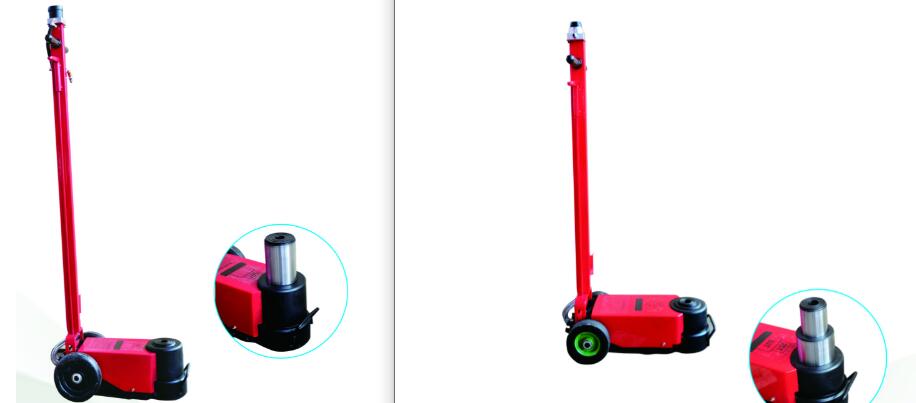Hydraulic jacks are powerful tools that have revolutionized the way heavy objects are lifted and moved. These devices use the principles of fluid mechanics to generate force, making them an essential tool in various industries such as automotive, construction, and manufacturing. In this article, we will explore the functionality, applications, and benefits of hydraulic jacks, as well as the different types available in the market.
Functionality of Hydraulic Jacks
Hydraulic jacks operate based on Pascal’s principle, which states that when pressure is applied to a confined fluid, the pressure is transmitted equally in all directions. This principle allows hydraulic jacks to lift heavy loads with relative ease. The basic components of a hydraulic jack include a reservoir, a pump, a valve, and a piston. When the pump is activated, it forces hydraulic fluid into the cylinder, which in turn pushes the piston upward, lifting the load.
One of the key advantages of hydraulic jacks is their ability to generate a large amount of force with minimal effort. This makes them ideal for lifting heavy objects that would be impractical to lift manually. Additionally, hydraulic jacks provide a smooth and controlled lifting motion, allowing for precise positioning of the load.
Applications of Hydraulic Jacks
Hydraulic jacks are widely used in the automotive industry for lifting vehicles during maintenance and repair work. They are commonly found in auto repair shops and garages, where they are used to raise cars and trucks for tasks such as tire changes, brake repairs, and undercarriage inspections. The ability of hydraulic jacks to lift heavy vehicles with ease makes them an indispensable tool for automotive professionals.
In the construction industry, hydraulic jacks are used for lifting and positioning heavy materials and equipment. They are commonly employed in tasks such as raising structural components, supporting heavy machinery, and leveling building foundations. The precision and power of hydraulic jacks make them essential for ensuring the safe and efficient completion of construction projects.
Hydraulic jacks also play a crucial role in manufacturing and industrial settings. They are used for lifting and positioning heavy machinery, as well as for assembly and maintenance tasks. The ability to lift heavy loads with precision and control makes hydraulic jacks an invaluable asset in manufacturing facilities, where efficiency and safety are top priorities.
Benefits of Hydraulic Jacks
The use of hydraulic jacks offers several benefits, making them a preferred choice for lifting and positioning heavy loads. One of the primary advantages of hydraulic jacks is their ability to lift heavy objects with minimal physical exertion. This not only reduces the risk of injury to workers but also increases productivity by streamlining lifting tasks.
Hydraulic jacks also provide a high level of stability and control during lifting operations. The hydraulic fluid used in these jacks allows for smooth and gradual lifting, preventing sudden movements that could lead to accidents or damage to the load. This level of precision is particularly important in applications where delicate or sensitive materials need to be lifted and positioned.
Furthermore, hydraulic jacks are known for their durability and reliability. They are designed to withstand heavy loads and frequent use, making them a long-lasting and cost-effective lifting solution. With proper maintenance, hydraulic jacks can provide years of dependable service, making them a valuable investment for businesses and professionals in various industries.
Types of Hydraulic Jacks
There are several types of hydraulic jacks available, each designed for specific lifting applications. Some of the most common types include:
- Bottle Jacks: These compact jacks are shaped like a bottle and are ideal for lifting vehicles and other heavy objects in tight spaces.
- Floor Jacks: Floor jacks are larger and more versatile, making them suitable for a wide range of lifting tasks in automotive and industrial settings.
- Hydraulic Cylinder Jacks: These jacks use a hydraulic cylinder to lift heavy loads vertically, making them ideal for applications where a straight, upward lift is required.
- Long Ram Jacks: Long ram jacks are designed for lifting and positioning heavy machinery and equipment, providing a high lifting capacity and extended reach.
In conclusion, hydraulic jacks are an essential tool for lifting and positioning heavy loads in various industries. Their ability to generate powerful lifting force with minimal effort, combined with their precision and control, makes them a valuable asset for professionals and businesses. With a wide range of types and applications, hydraulic jacks continue to play a crucial role in improving efficiency and safety in lifting operations.
Post time: Jun-13-2024

